Bare-feet, she walks on Venus with ease
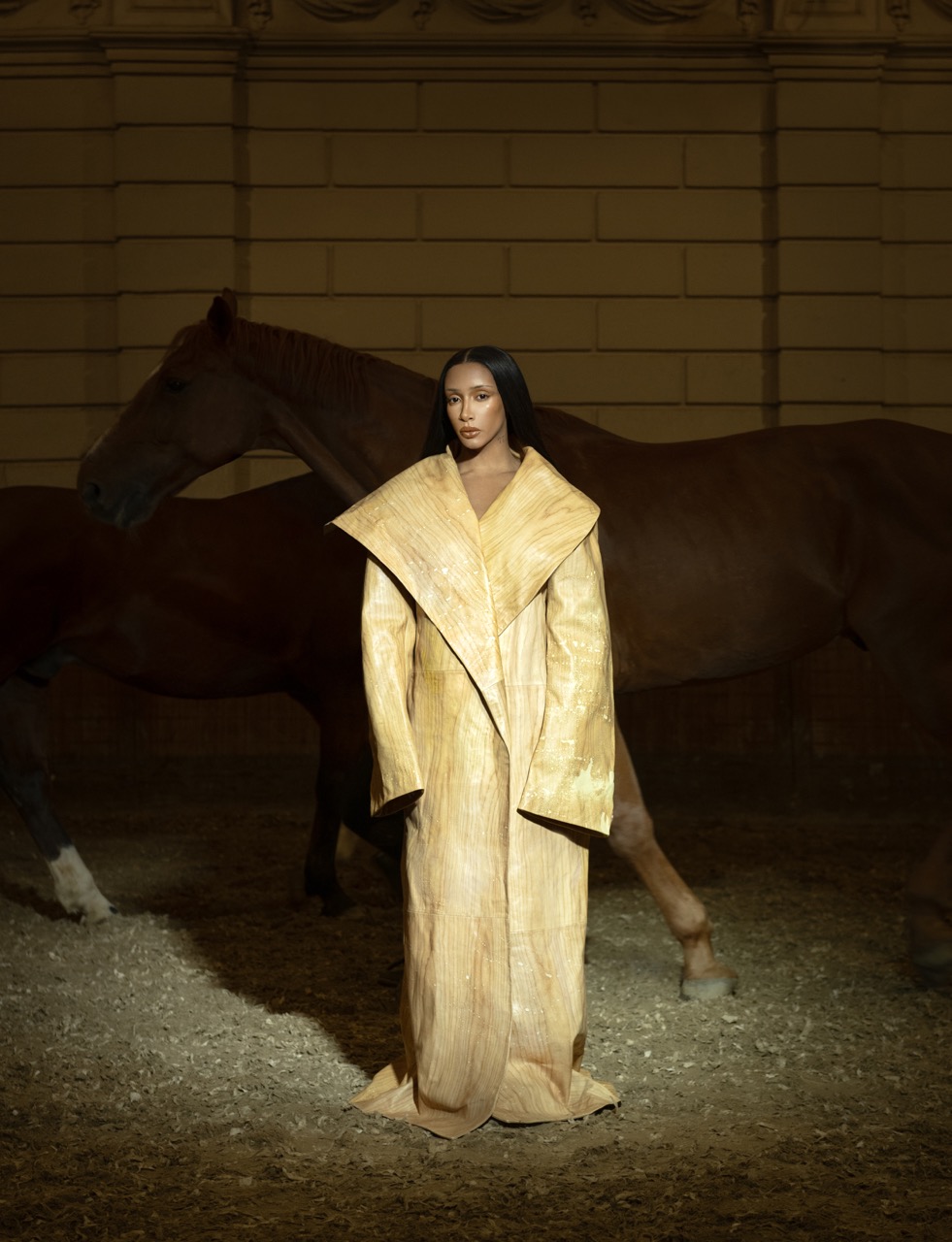
As the icy, Chicago winter slices through my cheeks, my heart is engulfed by a warm gust of wind. Lucid Dreamer from NAOMI SHARON’s debut album, Obsidian, sounds like home. I can picture myself gazing out at a black ocean, softly reflecting the hazy, golden lanterns draping the inside of the palapas on the beach behind me. The spatial presence of Sharon’s work — the echoing vocals, muffled but relentless bass, distant percussion — stages different memories and fantasies across each song. One moment I’m listening to the guitar by firelight in the sand, and the next I’m speeding through skyscrapers in the passenger’s seat on a night out, Celestial blasting from the car speakers.
One thing’s for sure: the Rotterdam native is taking her audience along for a ride, remastering neo-soul and R&B riffs with ambient house and acoustic drawls. Likened to other pioneers of the genre such as Sade and even Amy Winehouse, Sharon alchemises the sounds and songs that inspire her in order to produce defiant, sonic gold. No stranger to bringing stories to life after studying at the Academy of Theatre and Dance in Rotterdam, she lent her voice to mostly covers in the early 2010’s — even appearing as a contestant on The Voice in the Netherlands. It’s no surprise that after debuting her first original single in 2019, it would only take her second, Breeze, before she landed herself on Drake’s radar. First Lady of the infamous rap icon’s label, OVO Sound, Sharon charges through every glass ceiling standing in her way — maintaining perfect pace with the pull of the universe and letting her intuition and truth bring her fated opportunities. A fan of Glamcult since she was 16, sitting down with the artist felt less fated and more destined.
After a year of touring Obsidian, as well as supporting Tems for the Born in the Wild tour, we caught the creative in a moment of homecoming. Surrounded by familiar faces and good energy, cosmic coincidence was not lost on either of us as the art direction for the shoot mirrored Sharon’s own connection to horseback riding. “I think the reason I started [riding] again was because I wanted to have something that could calm me down — animals do that in general.” The horse’s own healing energy helps to bring Sharon peace; visiting the stable three times a week as a ritual to help her stay grounded. “You release a lot of tension when you move — and one thing I have to say about horses is that they can read your mind and energy. So when you’re close to a horse, or you’re riding it, you have to check in with yourself — that you’re calm, because otherwise they’re going to mirror whatever you’re feeling. So that’s also an exercise.”
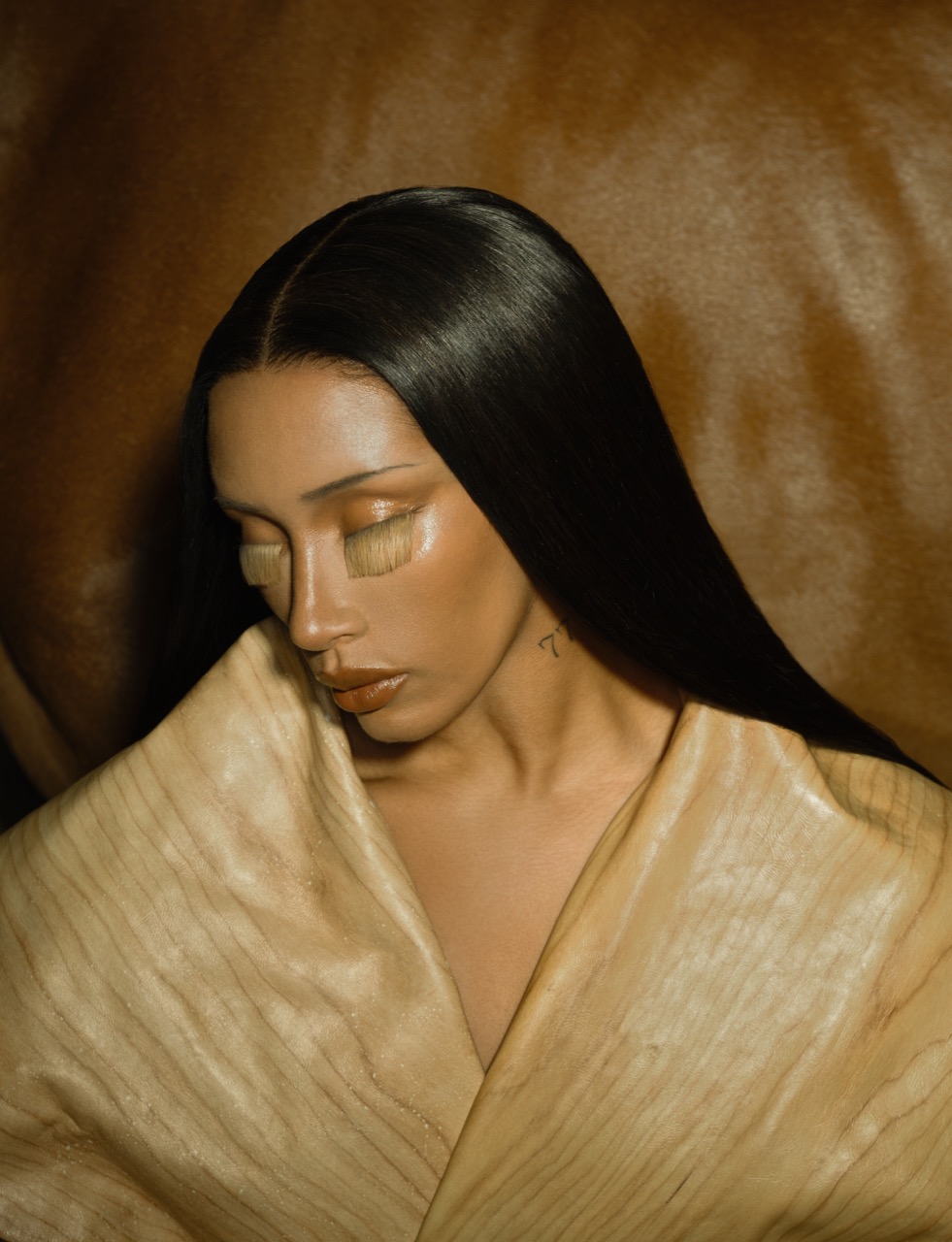
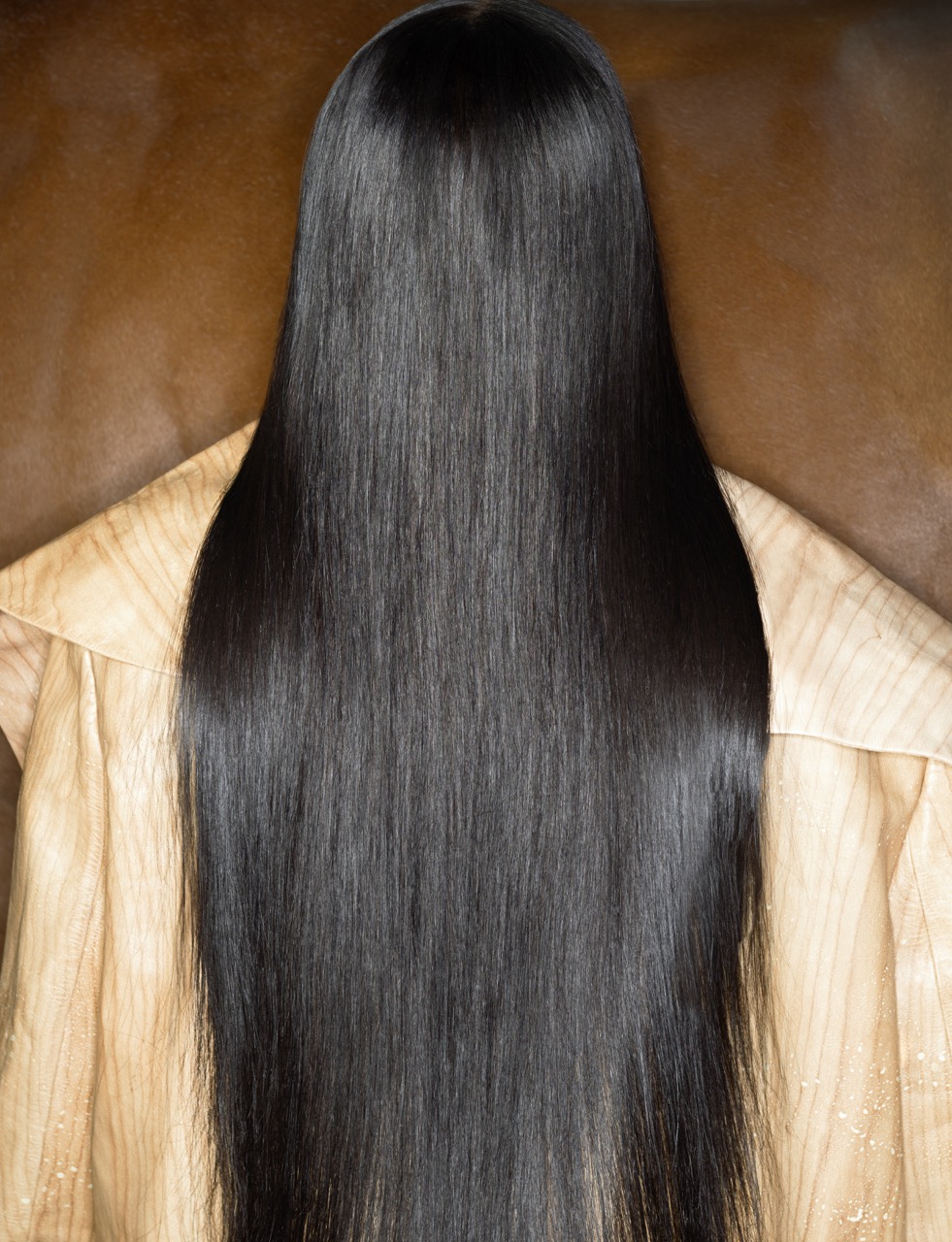
This mindfulness — trusting in how you show up in a situation and existing in dialogue with whatever faces you — materialises just as prominently in Sharon’s approach to music. Although it didn’t make it onto Obsidian, her track Daughter of the Sun marries transcendental vocals with vivid imagery, and earthy percussion bounces around classical guitar to further situate the song in its own universe. While its wistful, coastal energy might paint a warm and bright picture, Sharon elaborated that the song was in fact released during a much darker time. “I was trying to manage — one way of managing is to write about it and make songs about it,” Sharon explains. “So, it was very therapeutic for me, at least, to [write] it.” Likening the experience to shadow work — confronting and conquering the unconscious, darker elements of our spirit in service of self-development — Sharon is reconciling with heartbreak, balancing her increasing fame, and illuminating the lessons life has taught her into songs that could tell a truthful story about herself. It’s no accident that the album is named after a crystal known for its dark and dreamy energy, typically used by those seeking protection, grounding, healing, and truth.
While it’s up to the artist how much they share of themselves with the world, Sharon feels that her honesty and transparency are what allow her to connect to her audience. “It creates beautiful and vulnerable moments when you perform it live with the audience, because a lot of people might be going through the same thing. I always say it’s like a small therapy session — free therapy for me and the audience.” Vulnerable was exactly what she was going for while building the world for Obsidian, using the album as a sanctuary and safe space to unpack and express herself. Definition of Love, the opening track, initially reads as meeting someone who embodies exactly what you look for in love. Sharon explains that this track was actually a dialogue with herself, illustrating how the artist is defining love through her own embodiment of it — and mirroring how sometimes we act as our own reassurance that the love we search for exists. Another Life, on the other hand, acted as a conversation between the current and older versions of herself. While the track can reflect heartbreak after a missed connection — feeling like a plea to the universe that love might somehow be enough, Sharon is actually reassuring a past, more innocent part of herself. The artist is making a vow to stand behind her choice to engage with life regardless of the highs and lows, and pleading to herself to use her wisdom to make the right choice. Even with so many insightful and reflective tracks on the album, Obsidian is far from one-dimensional. Reflecting the ebbs and flows of life, tracks like Push feels like floating up from deeper emotions to a place you can have fun and dance your problems away. The record is personal and honest with itself — accompanied by select others who introduce new perspectives at different points of the story. Omah Lay’s verse on the aforementioned dance track, Push, allows Sharon to elevate the tone and dialogue within the song and introduce another character to the story. The artist stresses how collaborations need to come from a genuine place that feels natural — she sees features as tools to use when a track feels as though there is something missing. It’s as simple as seeing something in each other and exploring how this mutual resonance has the power to create for itself.
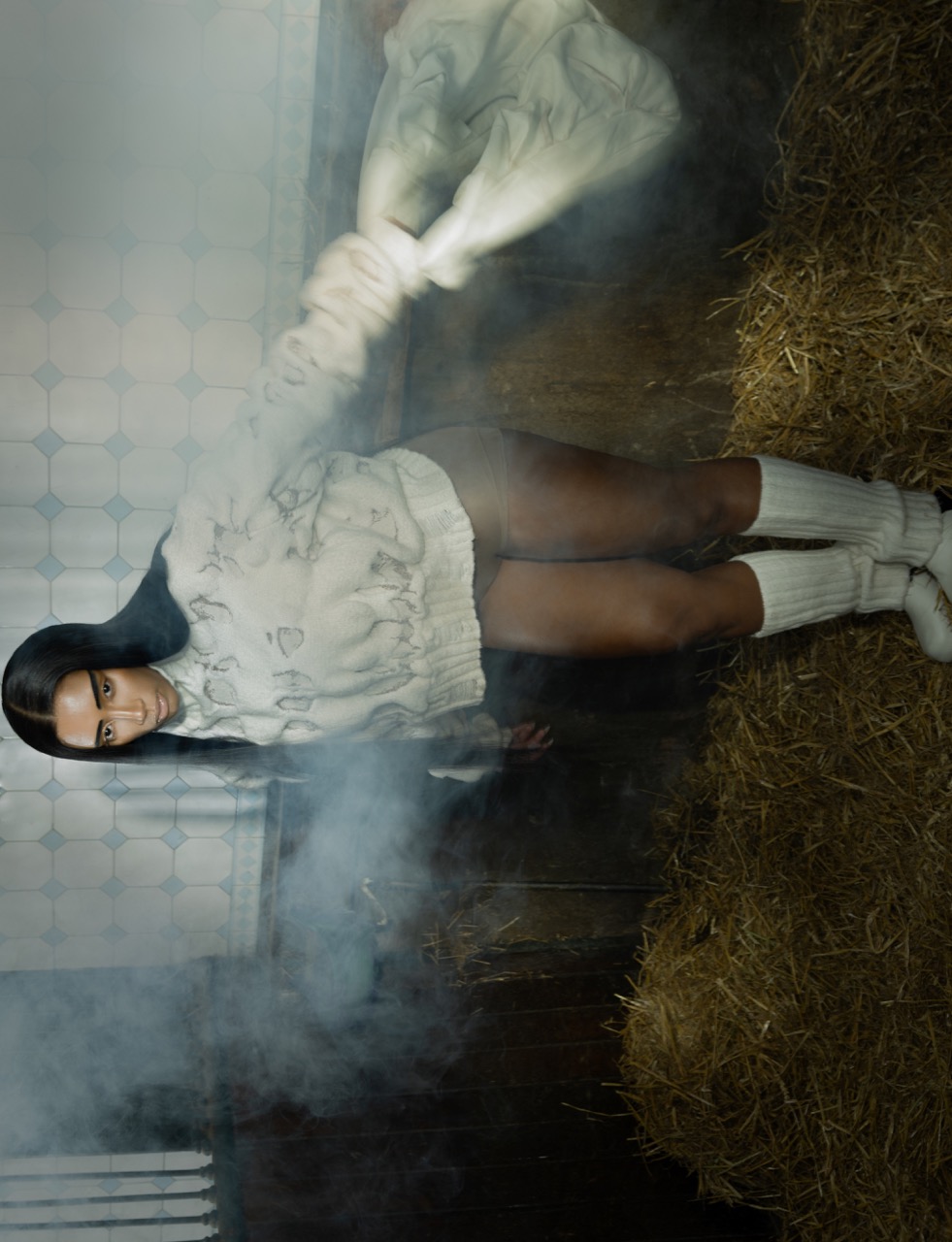
While Sharon prefers to take the road that feels right, her work is also the medium through which she evolves and transforms. While the artist’s personal style is best described as monochrome black, stylist Max Heuvelman had her in earthy browns and creams for this shoot — a far-cry from her typical uniform. Personal style can act as an armour — an affirmation of the self and visual expression of the energy you embody. Inspired by the Olsen Twins and a childhood watching FashionTV, it’s Yohji Yamamoto Sharom credits as having inspired her all-black wardrobe. Minimalistic but powerful, other brands she identifies with include Rick Owens and Entire Studios — designers who communicate through form and structure, rather than shade and pattern. Design is indistinguishable from art, and to live your life in it means to engage creatively with how you choose to show up and shape your own world. Even your inspirations might appear dramatically different from yourself, authenticity and confidence being the most powerful influences of all. Sharon cites her biggest inspiration as being her childhood best friend, Eva Cordia — founder of Rotterdam-based The New Studio. The pair grew up together, and although their individual senses of style might not mirror each other, they’ve evolved to consistently complement. “It kind of elevates you as a person when you see someone else doing his or her best to look amazing.” Whether motivated by muse or mentor, we both agreed that remaining confident and inspired by your own sense of personal style is essential — regardless of context. While I recall visiting my parents and going to the supermarket in a full Diesel look, we unanimously agreed that there’ s no reason to ever hold back. If there’s an opportunity to look your best, why not embrace it? “I think it’s really important to wear whatever you want to wear. If you want to wear jeans and it’s your thing, then if that makes you happy — you should!” Although Sharon wouldn’t be caught in denim (unless it was Ottolinger) on stage nor in the supermarket, dressing for yourself and as yourself is what authentically shines through.
While bonding over our shared investment on doing the most, it also felt natural to touch on the shared aspects of our heritage. With roots stemming from both Sint Maarten and Aruba, Sharon comes from the same constellation of islands in the southern Dutch Caribbean that I do. A live performance of the track Project Lotus on her Instagram was filmed at Playa Forti in Curaçao — a 50-minute drive from the house I grew up in. When asking her about her relationship with the islands, she confessed that she felt quite disconnected from her roots when she was younger. However, she immediately fell into union with the islands upon visiting, giving her further insight into herself: “I am my roots, of course. So while exploring that world of my ancestors, I also felt like it’s already in me… It’s what I see in the mirror. It’s me.” It’s a complex issue trying to reconcile where you belong when you’re informed by so many different worlds. Even in relation to her own sense of Dutch-ness, Sharon expresses how growing up in the culture did not entirely compensate for the absence she felt of the other side of her family. Her recent inspiration to start learning Papiamento — the official language of Aruba, Bonaire, and Curaçao — called into question the relevance of carrying these parts of our culture to the outside world. If you don’t need to learn it and won’t regularly use it, then why bother? “It’s just a way for me to be more in tune with my roots. It’s beautiful to speak that language when it’s in you, you know?” It can be incredibly difficult to foster a sense of home and belonging when you feel like there are parts of you that are inaccessible, but the only solution to feeling so detached is to come back to the self and ground. You can take all of these parts of who you are and use them to inform a new understanding of belonging, believing that these different parts of our cultural identity belong to us.
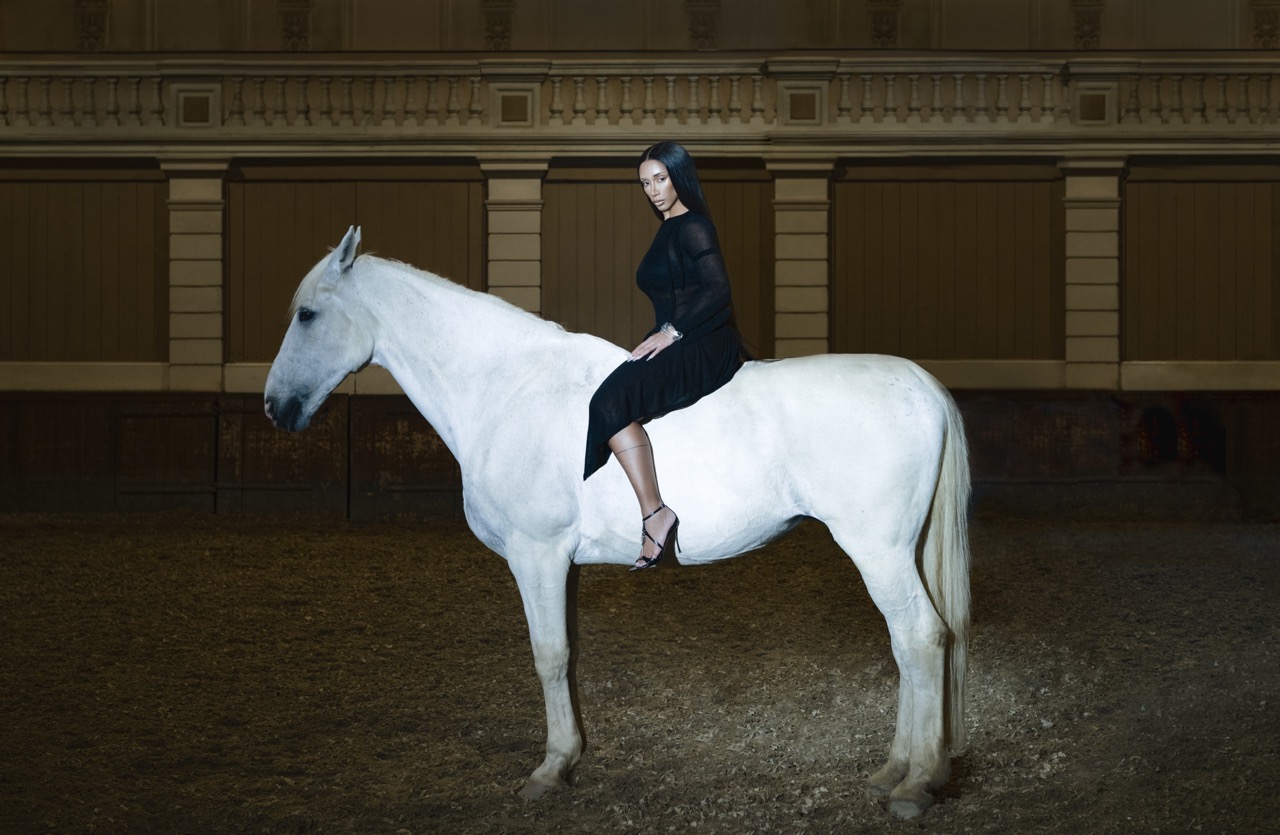
It would seem only fitting that, as a Pisces, Sharon’s astro-cartography reading — also known as locational astrology — would point to Bali as the most auspicious place for her to be. Even down to the geological structure, an island is a community held by the ocean. It’s a world within the world, where the earth defines the parameters of what home is. “An island has its own vibe. It’s relaxed, more laid back. It has a magical energy, I have to say, where it seems like things just align there.” The islands even started creeping their way into the world of her music. Although her preferences were rooted in Dancehall and Afrobeats, her initial releases didn’t reflect those sounds. Recalling an important conversation with Drake when she got signed, the rapper had stressed the importance of her translating her personal taste to her own music. Ultimately, the advice resonated, with the experience not only acting as a fun exploration for Sharon, but also opening her eyes to the influence of her worlds in different contexts. “It’s also something people can play in the club. With Another Life and a couple of other songs, people started to make remixes of them and play them at festivals. It’s so beautiful to see a crowd moving without me being there, but just the song being remixed and they’re moved by it.”
Being moved by the artist’s work seems like the only natural reaction, with Sharon’s magnetic vocals acting as a transcendental vessel through which to navigate the swells and calmer waters of the record. Sharon describes her writing process as an incredibly intuitive ritual: “We mostly start from scratch. When we do that, we have a melody on the piano or the guitar, and then I record what comes to mind. It can be gibberish, and then after that we’ll listen back to the recording and put words to it.” It seems like the process of writing starts off with a map, with Sharon’s voice creating a landscape to be navigated and travelled along the lyrics of her songs. “A melody is a feeling. It’s something that comes naturally, whereas with words you need to think.” Being able to build off of a feeling and let yourself authentically express it before you attempt to translate it to others, allows for the central heart of the work to stay true — allowing yourself to indulge freely and harmoniously with the spirit of the song across the production and consumption of her work.
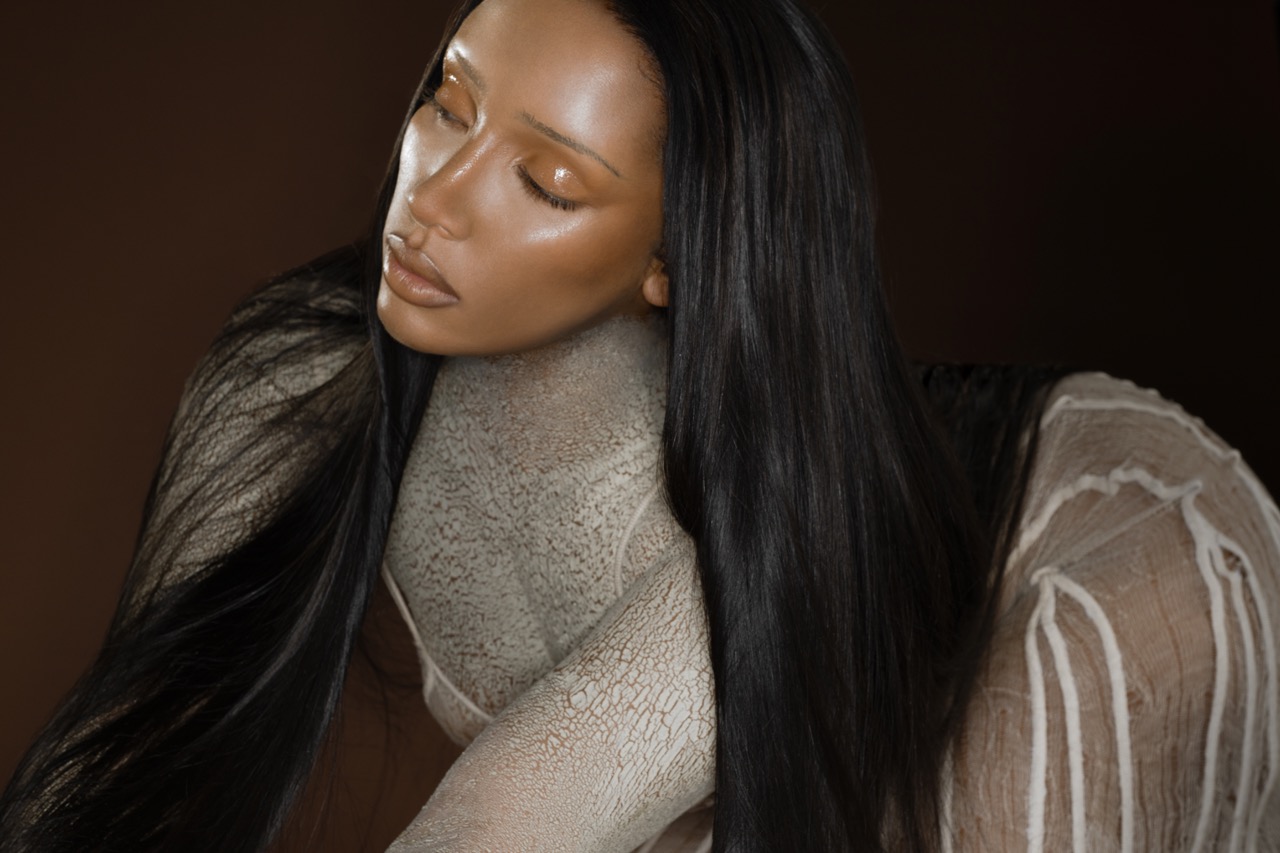
Spirituality has played a significant role in Sharon’s life, reflected not only by her exploration of the shadow self and looking to the stars for travel guidance, but also through her scripting work. Scripting in spirituality entails writing down your desired manifestation as though it has already happened, bringing the ideal reality into existence through the power of intention and visualisation. “I have manifested everything that I’ve done so far. I truly believe in that power that we hold. The Law of Assumption, for instance, is something I truly believe in.” Once you can envision yourself in the situation you desire, you can take the necessary steps to get there. “A lot of people have dreams, but they’re not that serious about them because they get affected by other people’s opinions or their own self-doubt. Once you break that code for yourself, it will definitely elevate you into this new energy.” Manifestation can give you a lot of freedom in this regard — even if things look as though they won’t work out, this mindfulness calls you to understand that even failures or misses are not a permanent “no”. Maybe there are lessons that you have yet to learn, that the universe is trying to redirect you to confront before you cross the finish line. The most important thing is to maintain this faith in yourself. “This industry is not for the faint-hearted. So you must have self-trust.”
Even in the context of Obsidian receiving so much critical acclaim, this trust in herself is instrumental in maintaining Sharon’s vision and drive to produce works that feel authentic to herself. “Whatever comes my way, I’m okay with that. I just trust that’s the way it’s supposed to be.” And moving forward into the world of her next project, things are going to be a lot lighter. “I’m changing — there’s like a transition now. I love to reinvent myself now and then.” I think we can all hope that regardless of the tempests and towers that come crashing down in the storm, we all find a lighter version of ourselves in the future. One that’s full of hope, full of trust, and champions the love we hold for ourselves above all else. Facing uncertain futures, bravery is not the absence of fear, but rather the drive to get back onto the horse and chase after the life and love you want — regardless of the obscurity on our path. If you open your heart and listen to your intuition, it’s only a matter of time before your destiny will find you.
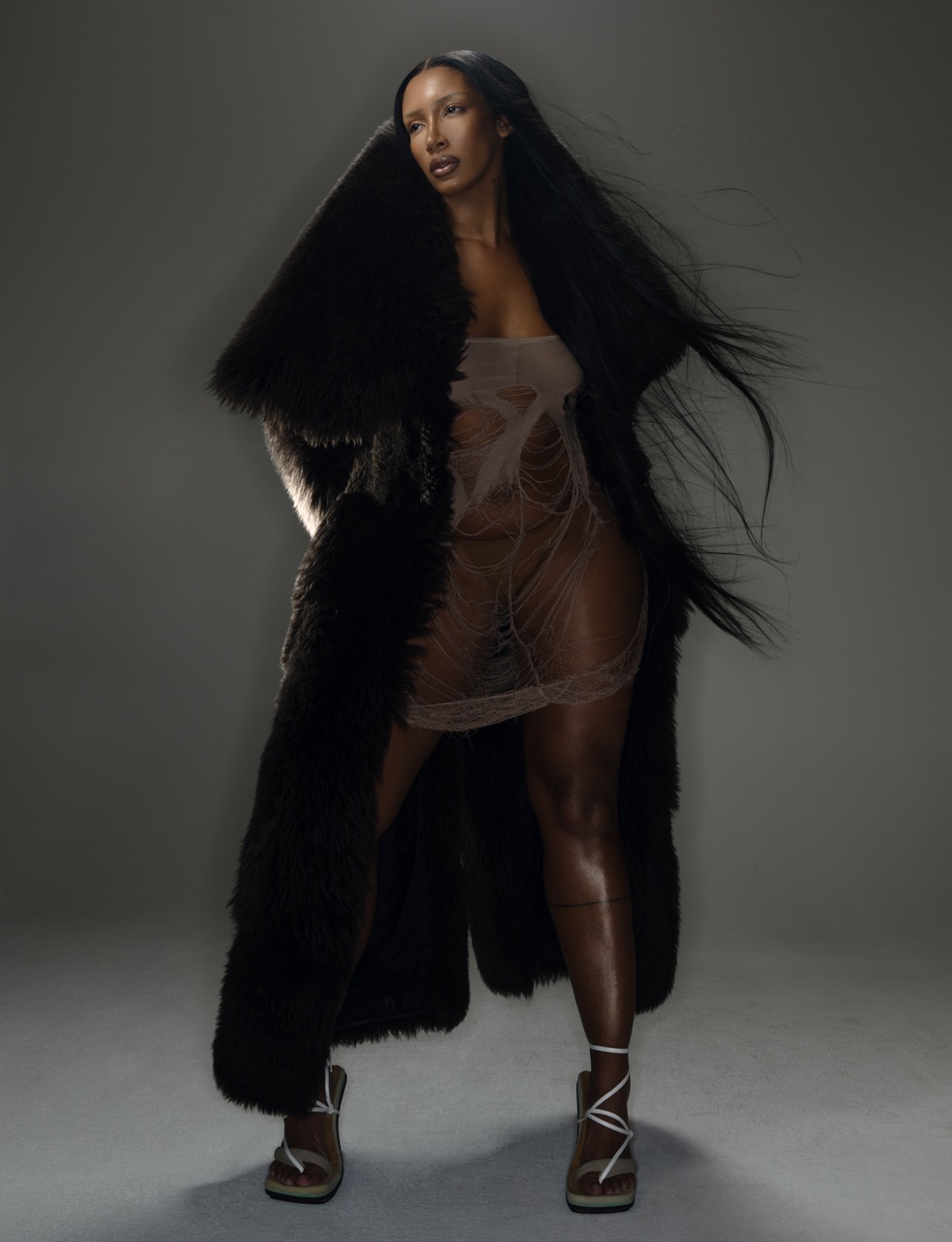
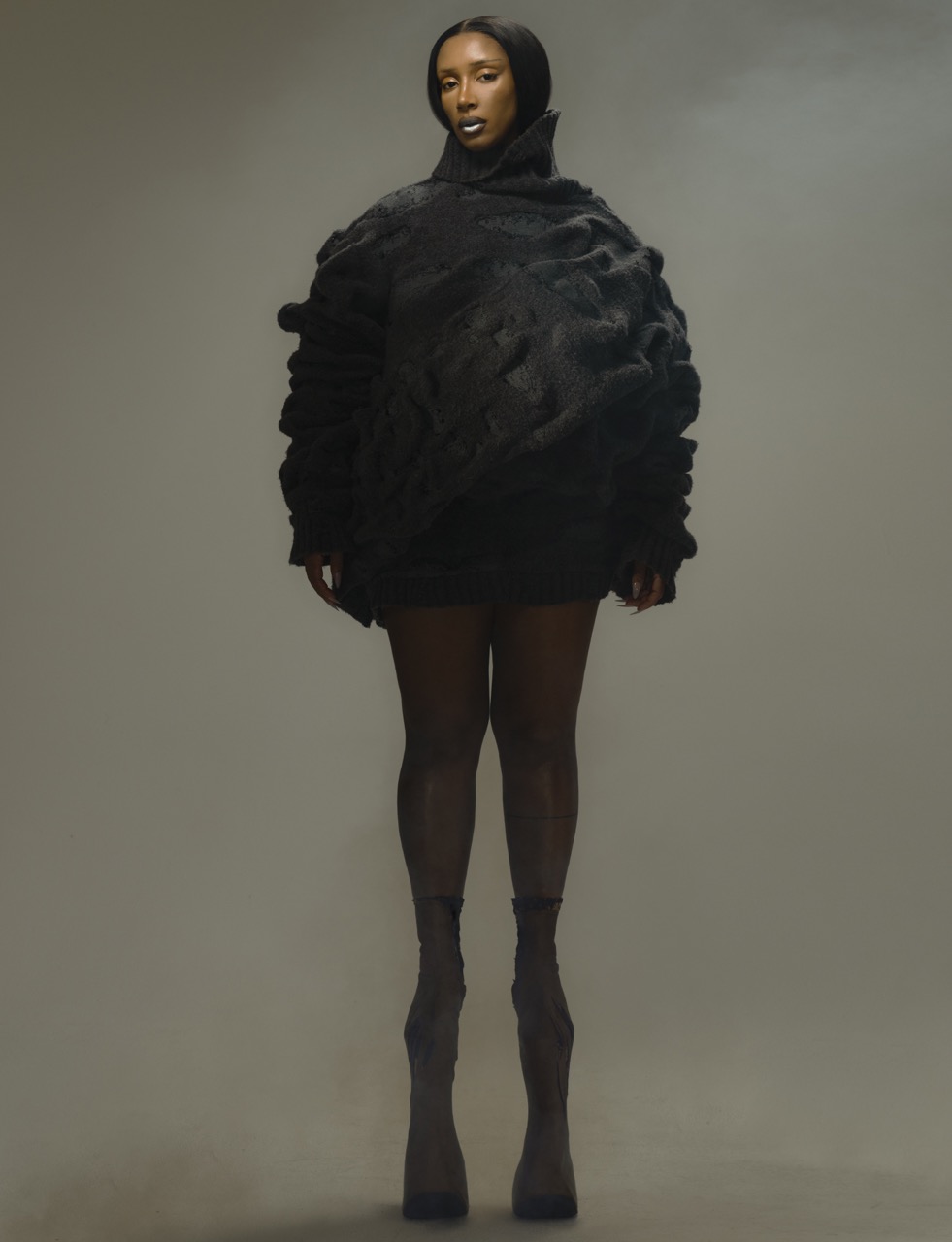
Words by ALIA AYOUBI
Photography and creative direction by DION BAL
Styling by MAX HEUVELMAN
Hair by VICTORIA ZYNWALA
Make-up by NAÏMA BREMER
Creative production by PYKEL VAN LATUM @ Glamcult
Photography assistance by EUGENE BERKOVSKI and ELIZA KANIA
Production assistance by VERONICA TLAPANCO SZABÓ @ Glamcult
Special thank you to Hollandsche Manege, LYNN, NINA and SANGUITA and XYZ STUDIOS AMSTERDAM
Notifications